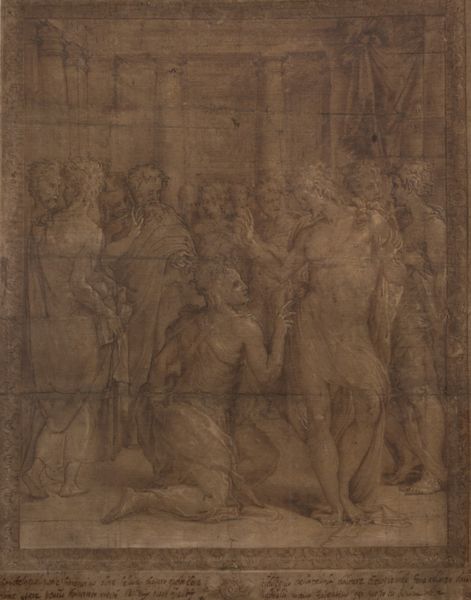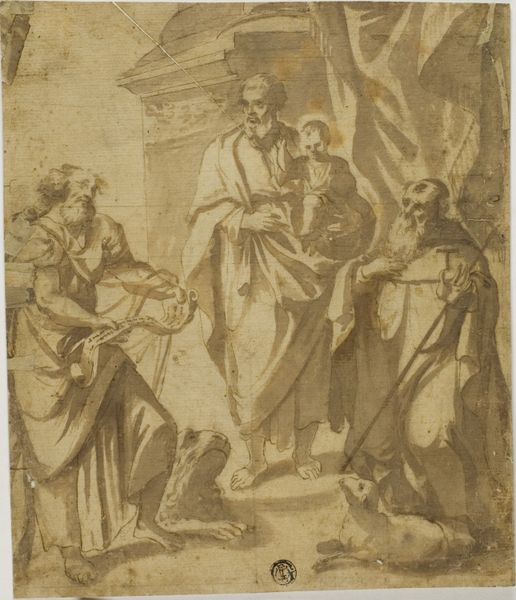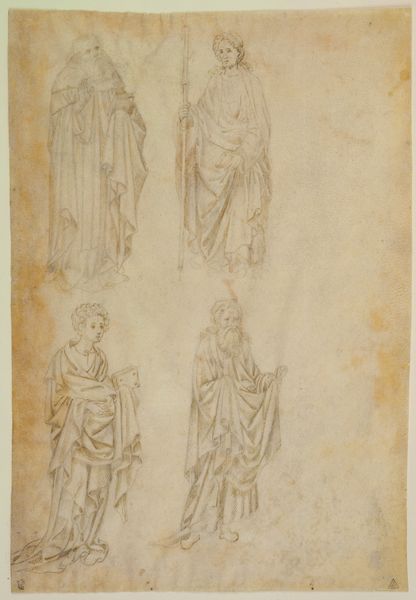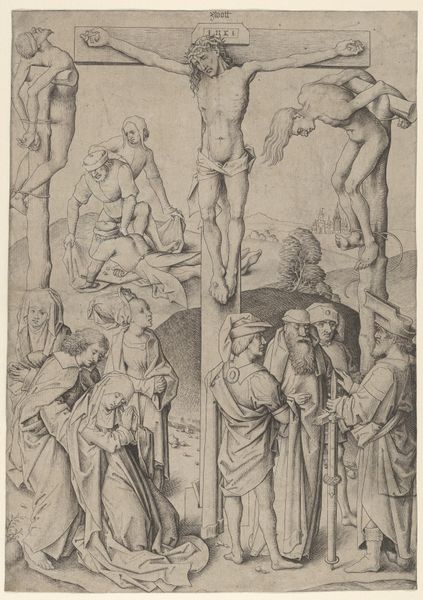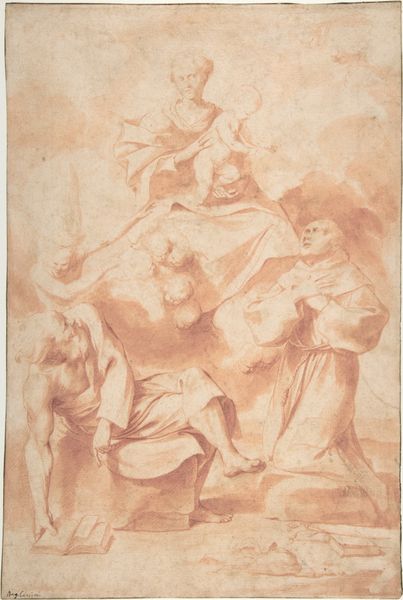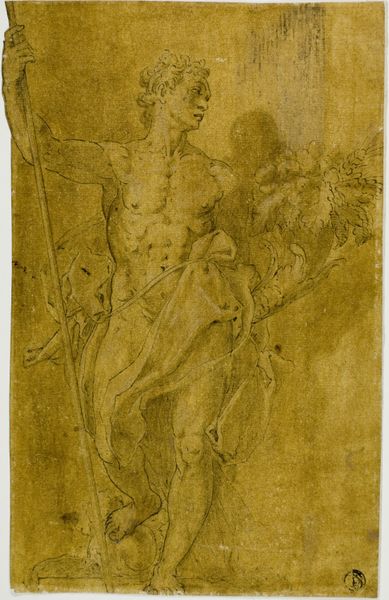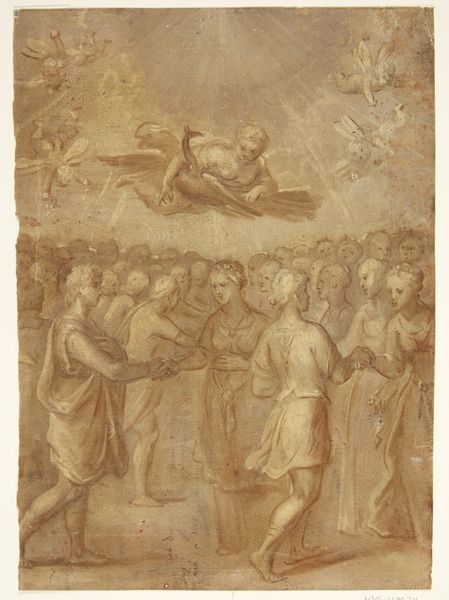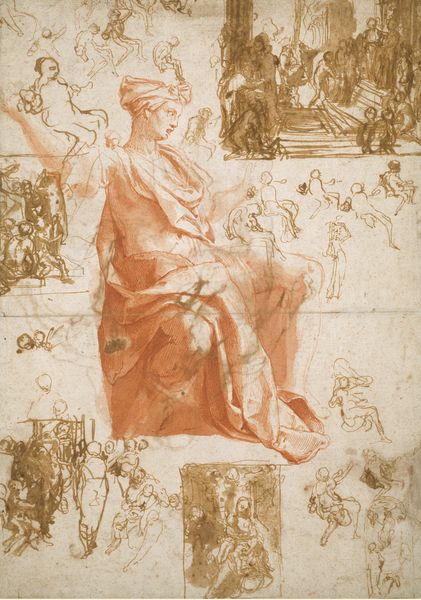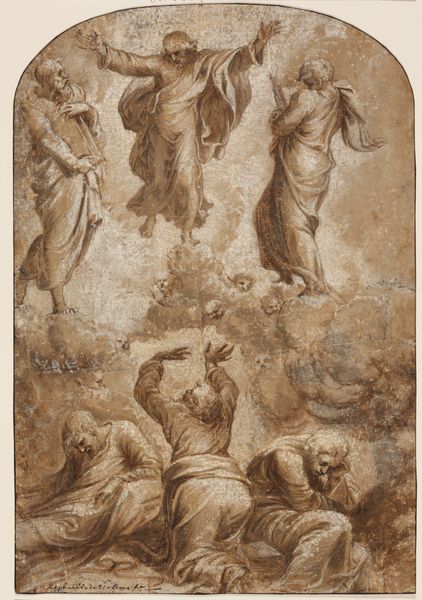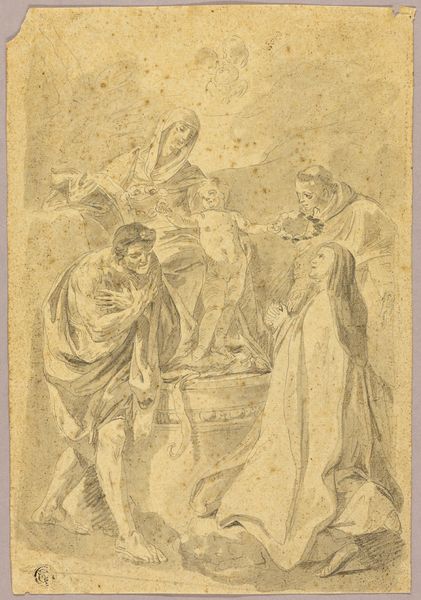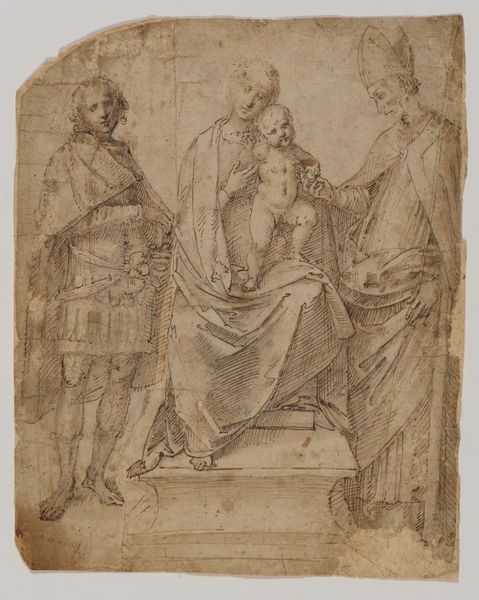
drawing, charcoal
#
drawing
#
narrative-art
#
charcoal drawing
#
figuration
#
11_renaissance
#
charcoal
#
history-painting
Dimensions: 173 mm (height) x 126 mm (width) (bladmaal)
Editor: So, we have before us "Christ on the Cross flanked by two Saints," dating between 1528 and 1602, attributed to Sebastiano Vini. It’s a charcoal drawing, and I’m immediately struck by the use of shadow to create depth. What is most compelling to you about it? Curator: For me, the interest lies in the production of this image, literally the drawing itself, not the symbolism. I would focus on the materials Vini used—charcoal on paper. What was the availability of these materials in 16th century Italy? Who had access to them, and how might that access reflect power dynamics of the time? Editor: So, you're thinking about who was able to create and, maybe more subtly, who was being excluded from the artistic process. Curator: Exactly. Consider also the labour involved. Drawing, unlike fresco, could be produced in the studio. Did Vini have assistants? The speed with which a charcoal sketch could be created meant ideas could be worked out in the studio faster than with more traditional methods. And what kind of training would one require to develop proficiency with this medium? Editor: I never really thought about the skill required, in itself, as an element in the creation of an image. It feels like the ease of the drawing hides the intensive labor beneath it. How does it contrast with something like marble sculpture? Curator: Well, marble implies access to quarries, skilled stonemasons, expensive tools. A drawing requires significantly less capital. This allows for greater experimentation and arguably democratizes the art-making process, even though, as we said, this work and artistic recognition, remain hierarchical. Editor: That gives me a completely different lens to consider when viewing this work. I’m walking away with a new appreciation for the labor, materials, and context in understanding what is in front of me! Curator: Precisely, seeing art as not just divine inspiration, but also social production, allows us to challenge its presumed universal appeal, as well as to focus on materiality instead of idealized form.
Comments
No comments
Be the first to comment and join the conversation on the ultimate creative platform.
